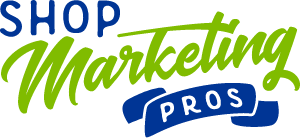Let’s go ahead and get this out of the way upfront: I’m going to answer your question without actually answering your question. But I am going to show you how to determine what your acquisition cost should be.
And here’s why…
Every now and then, someone in a group or on a forum asks, “What should I be paying to acquire a new customer?” Seems like a fair question, right? But the problem is most of the people giving answers are either:
- Pulling numbers out of thin air
- Repeating something they heard someone else say
- Or comparing their situation to yours, like all shops are built the same
None of that is helpful. In fact, it’s dangerous.
In auto repair shop marketing, this whole “What’s your acquisition cost?” question has become the new “What’s your labor rate?” question, and just like that one, the answer should never be based on what some guy down the street is doing. That guy might be broke and doesn’t even know it.
Let’s break it down the right way.
So... What Is Acquisition Cost, Really?
Customer Acquisition Cost (CAC) is simple in theory. It’s the total cost of your marketing divided by the number of new customers you got from it.
Simple. But almost nobody calculates it correctly.
Most shop owners take their ad spend only, say, $1,000 on Google Ads, and divide it by the number of leads or calls. “I got 20 calls, so my CAC is $50.”
Nope. Try again.
First of all, calls aren’t customers. Neither are appointments, if they didn’t show up. The only thing that matters is actual paying customers. And you have to count all marketing expenses, not just the ad spend.
That includes:
- Ad spend
- Management fees (yes, your marketing agency costs)
- Creative development (video, photo, graphics, etc.)
- Software tools (CRM, email automation, reputation platforms)
- Labor (who’s answering those leads?)
Add all that up. Now divide it by the actual number of new clients that walked through your door and paid for service. That’s your CAC. Everything else is just vanity math.
Here’s What That Looks Like in Real Life:
Let’s say over the course of one month, you spent:
- $1,200 on Google Ads
- $800 on Facebook Ads
- $1,000 in agency management fees
- $800 on video production
- $200 for CRM/email tools
That’s $4,000 total in marketing spend for the month.
Now let’s say you tracked it properly, and 25 actual new paying customers came into your shop that month from those efforts.
Your real CAC would be:
$4,000 ÷ 25 = $160 per new customer
If you only used the ad spend ($2,000) and divided that by the number of calls (let’s say 50), you’d be telling yourself your CAC is $40. But that’s not reality, that’s wishful thinking.
Most People Never Do the Math
You’d be shocked how many shop owners are guessing. Or worse, they’re copying numbers from someone in a Facebook group who “heard from a guy” that $40 was the sweet spot.
Let me ask you something…
Would you base your labor rate on what your competitor charges without knowing their expenses and profit margins?
Of course not. That’d be reckless.
So why would you base your auto repair marketing strategy on someone else’s half-baked data?
Here’s what I see all the time: someone compares the acquisition cost to the value of the first repair order. “I spent $100 to get that customer, and they only spent $180. That’s a loss.”
No, that’s a small-minded view of marketing.
Because here’s the truth: you don’t build a successful shop on first visits. You build it on lifetime value.
The Real Math: CAC vs. LTV
Let’s say you spend $200 to bring in a new client. That’s your CAC.
Now, let’s say that the customer comes back twice a year, spends an average of $600 each visit, and stays with you for five years. That’s $6,000 in total revenue from that one customer.
That $6,000? That’s your LTV, Lifetime Value.
Would you spend $200 to make $6,000? Of course you would. And if you do good work, build trust, and turn that customer into a raving fan, they’ll send their friends too.
That’s why smart marketing for auto repair shops isn’t about how little you can spend, it’s about how much you can afford to spend while still staying profitable.
There’s a saying in marketing that I live by:
“He who can spend the most to acquire a customer and still maintain a healthy profit margin wins.”
If you know your numbers and you’re confident in your ability to deliver, retain, and build brand equity, you can spend more than the guy who’s constantly chasing discount-hunters.
That’s how you win.
What My Shop Paid And Why It Doesn’t Matter To You
Back when I was running my shop, our cost to acquire a customer was about $350.
At first, that number freaked me out. Dropping that kind of money just to get one customer? It felt risky, especially back then when we didn’t have the kind of data we do now, and margins were a whole lot tighter.
However, once we began tracking retention and examining the lifetime value of a customer, everything fell into place.
That $350 wasn’t a cost. It was an investment. One that paid off again and again as those customers came back, brought their friends, and became part of the family.
Here’s the part you really need to hear: that number worked for my shop because it was based on our ARO, our margins, our retention rate, and our market.
Your numbers are different.
If you try to copy mine or anyone else’s, you’re playing the wrong game with the wrong playbook. And that never ends well.
Great marketing is about knowing your numbers and building a strategy that’s yours, so don’t waste your time chasing averages.
What Drives CAC Up or Down?
Glad you asked. Here’s the short version, and it’s probably going to sting for some.
You’ll Pay More If:
- Your website sucks: If it’s slow, outdated, or confusing, you’re burning money before people even call.
- Nobody knows you: Cold traffic costs more. Being invisible in your community drives up your ad spend.
- You’re in a crowded market: More shops = more competition = higher cost per click.
- Your front desk fumbles the ball: If calls don’t turn into appointments, you’re wasting leads and driving up CAC.
- You’re only running ads: If there’s no brand behind the ad, you’ll always have to outspend someone else to win.
You Can Spend Less If:
- People trust you: A solid reputation means your marketing doesn’t have to do all the convincing.
- Your customers send referrals: Organic growth is the cheapest growth.
- Your team creates raving fans: Loyalty is the marketing you don’t have to pay for.
- You’re known in your community: When you’re top of mind locally, acquisition gets a whole lot easier.
- Your content pre-sells: Education builds trust. Real content makes people choose you before they ever hit “call.”
Some shops spend $80 to get a customer. Others spend $400. Both can be right; it all depends on the game you’re playing.
You Can’t Just Buy Your Way In, You Gotta Be Known
Here’s something else no one talks about enough: brand equity lowers your acquisition cost.
If your shop is known and trusted in your community, you don’t have to work nearly as hard or spend as much to win new customers. When people already know you, already trust you, see your team showing up in the community… half the battle’s won before they ever need a mechanic.
Want to learn how to build that kind of presence? I wrote an entire article on it:
How to Become Well Known in Your Community
That’s the kind of strategy that pays off for years not just clicks and calls today.
One More Thing That’ll Save You a Lot of Money (and Headaches)
There’s no magic number. Stop looking for one.
You wouldn’t pick your labor rate based on your competitor. You shouldn’t pick your acquisition cost that way either.
What you should do is sit down, look at your:
- Average Repair Order (ARO)
- Client Retention Rate
- Gross Profit Margins
- Lifetime Value of a Client
…and then determine what you can afford to spend to acquire a client and still win.
Because if you’re letting the “industry average” dictate your budget, there’s a good chance you’re leaving money on the table or worse, burning cash trying to match someone else’s numbers.
Ready to Stop Guessing and Start Marketing Like a Pro?
If you’re looking for shortcuts, hacks, or someone to tell you what your CAC should be, this probably wasn’t the answer you wanted.
But if you’re the kind of shop owner who plays the long game, builds a brand, and does the math, then you already know:
Real marketing isn’t cheap. But it’s worth every dollar when you know what you’re doing.
And if you’re working with one of the better auto repair shop marketing companies, they’re not just managing ads. They’re helping you track, measure, and improve your real numbers, not just hand you leads and hope for the best.
If that’s what you want, a real marketing partner who understands your shop and plays the long game, book a free discovery call with Shop Marketing Pros and let’s talk strategy.
So stop chasing someone else’s CAC. Start owning your strategy. That’s how smart shop owners market.
TL;DR
Acquisition cost should be based on your total marketing expenses divided by the total number of new clients gained in the same time period. How much you can afford to spend acquiring a new client should be based on the lifetime value of your average client, and your net profit margin. Your perfect acquisition cost should be based on your numbers only, not industry averages or other shops’ metrics.
Brian Walker
“Digging in and figuring out why a business’ marketing isn’t working is a lot like it was when he was elbows deep into a car that no one else could fix. When you figure it out, there’s nothing else like it.”
To get to do this for auto repair shop owners combines his passions, and he couldn’t be more excited about helping shop owners.


